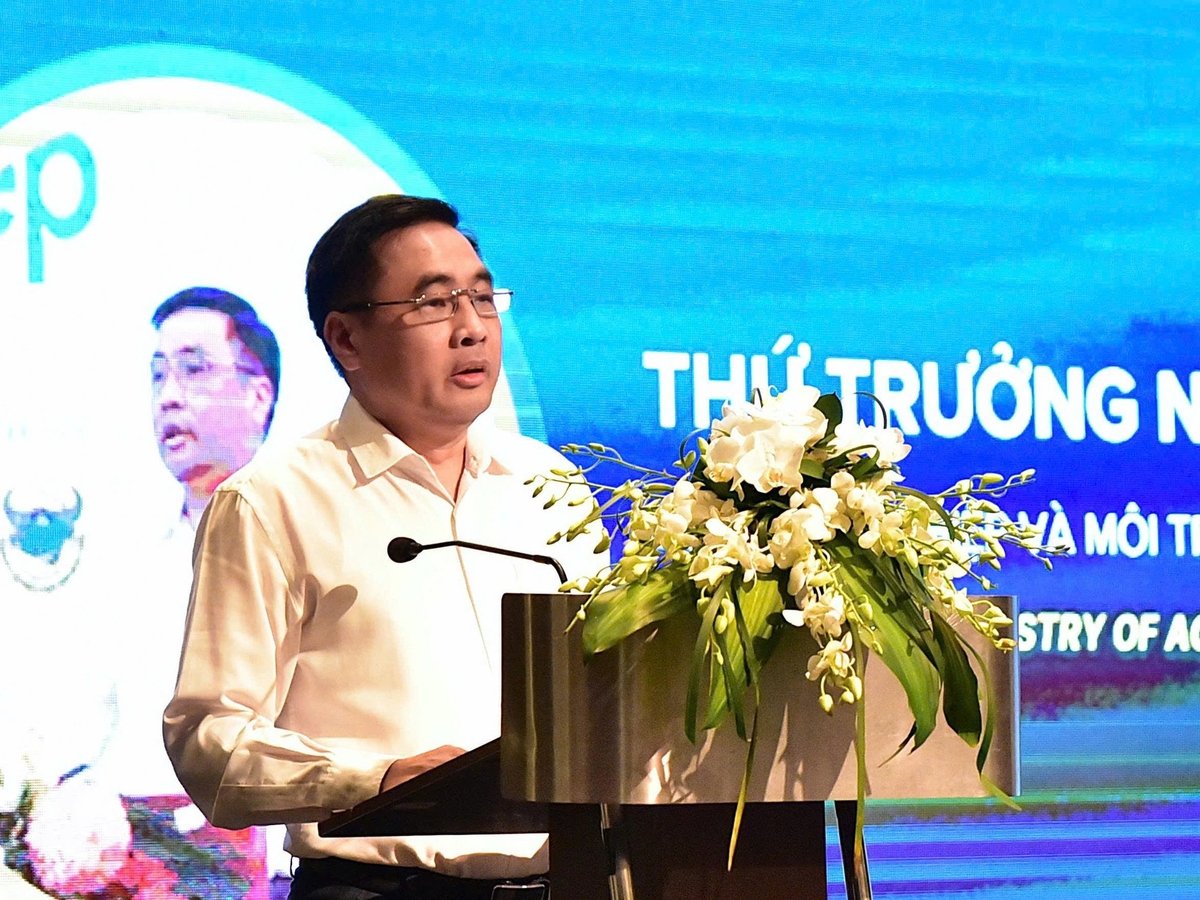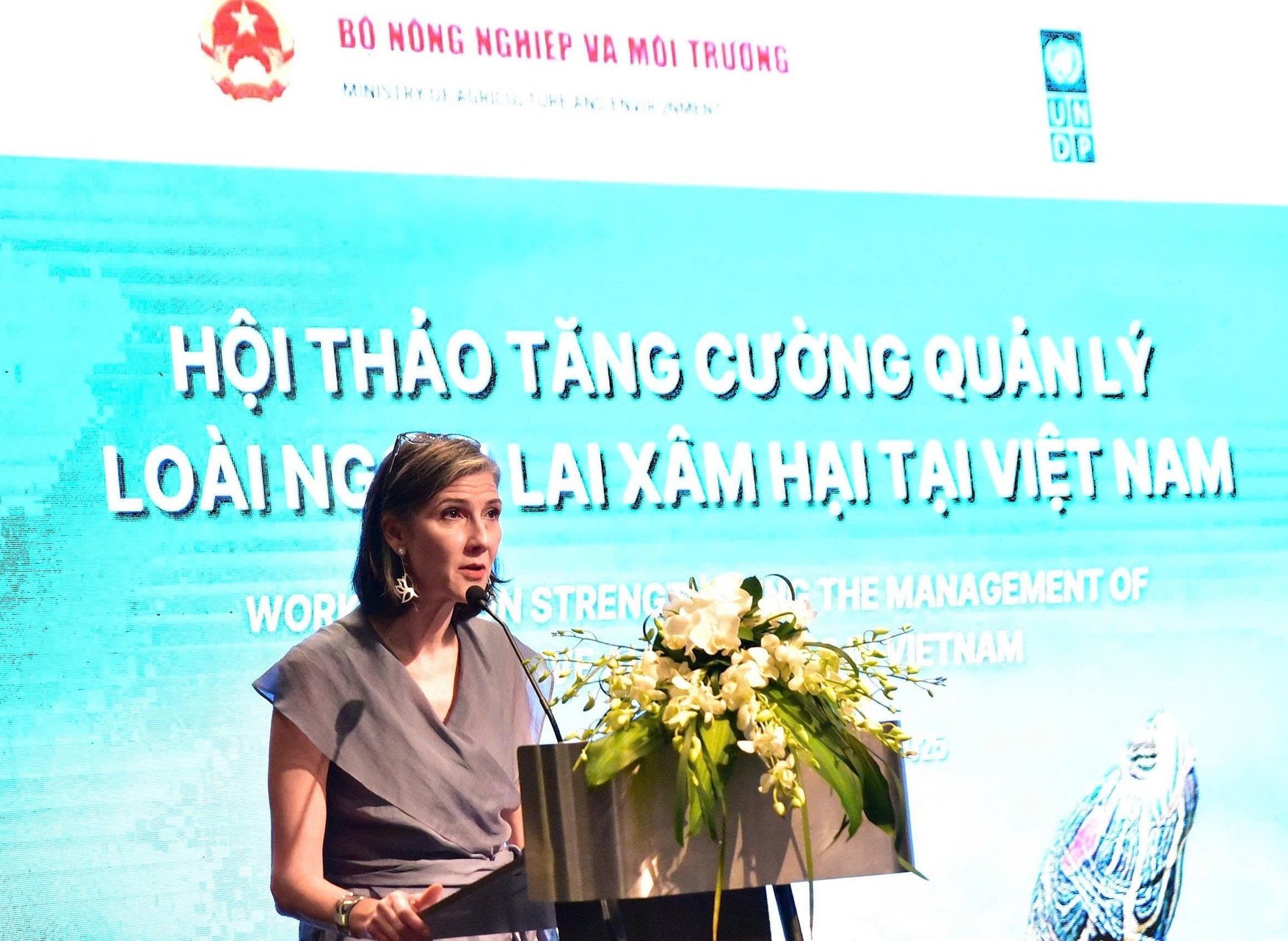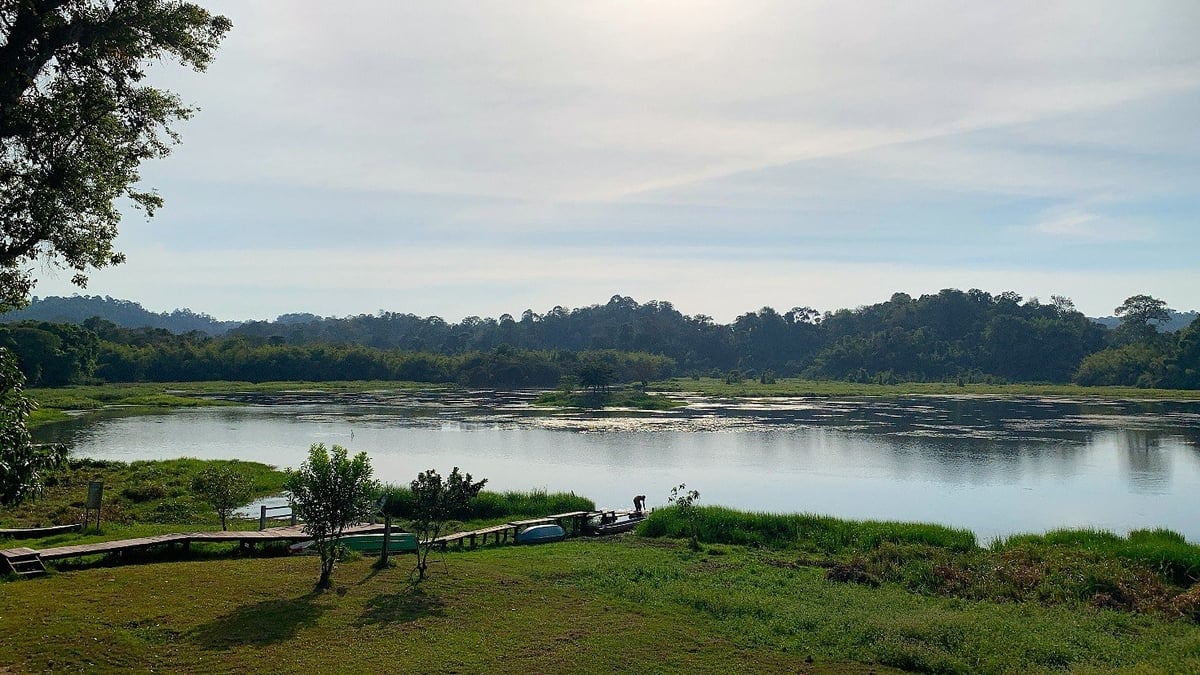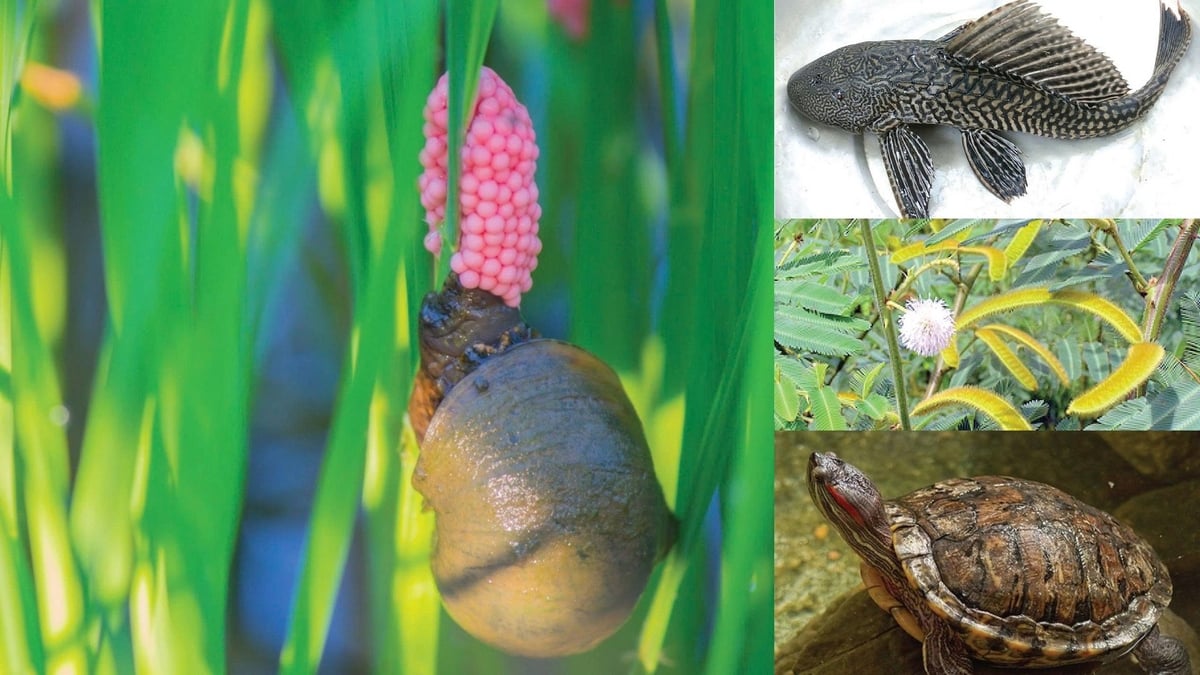December 4, 2025 | 15:58 GMT +7
December 4, 2025 | 15:58 GMT +7
Hotline: 0913.378.918
December 4, 2025 | 15:58 GMT +7
Hotline: 0913.378.918
At the workshop "Strengthening the management of invasive alien species in Vietnam" held on July 31, Deputy Minister of Agriculture and Environment Nguyen Quoc Tri emphasized that invasive alien species, though often overlooked, are among the top 5 causes of biodiversity loss, especially in the context of climate change.
Controlling and preventing the spread of invasive alien species is a major challenge and priority not only for Vietnam but also globally, requiring close coordination among government agencies, organizations, and communities.

Deputy Minister Nguyen Quoc Tri delivered the opening remarks at the workshop on Strengthening the management of invasive alien species in Vietnam. Photo: Kieu Chi.
Invasive alien species are organisms originating from elsewhere that, once introduced to a new environment, rapidly proliferate, outcompete native species, and disrupt ecological balance. In Vietnam, species such as the golden apple snail, Mimosa pigra, and water hyacinth are causing serious impacts on agricultural production, freshwater ecosystems, and local livelihoods.
According to Deputy Minister Tri, the Ministry of Agriculture and Environment (MAE) will work closely with the United Nations Development Programme (UNDP) Vietnam and other stakeholders to soon finalize policy mechanisms and identify effective solutions to guide future management efforts aimed at controlling, preventing, and eventually eradicating invasive alien species in the country.
Ms. Ramla Khalidi, Resident Representative of UNDP in Vietnam, emphasized: "Controlling invasive alien species is not only about protecting nature. It is about safeguarding human health, livelihoods, and our future." According to her, these species are spreading faster than ever before due to increasing trade, tourism, and other cross-border human activities.

According to Mrs. Ramla Khalidi, addressing the issue of invasive alien species is not only about protecting ecosystems, but also about protecting people - their health, livelihoods, and future. Photo: Kieu Chi.
The 2023 report by the Intergovernmental Science-Policy Platform on Biodiversity and Ecosystem Services (IPBES) states that more than 3,500 invasive alien species have been recorded as causing harm globally, with estimated damages amounting to up to USD 420 billion annually. Around 200 new alien species are introduced into ecosystems each year, and this number could increase by one-third by 2050.
Through the Early Action Support Project funded by the Global Environment Facility (GEF), UNDP is working with Vietnam to develop national guidelines for the detection, monitoring, and management of invasive alien species. This includes revising draft Circular 35, which regulates the investigation, identification, evaluation, and issuance of the list of invasive alien species, as well as reviewing and updating Vietnam’s relevant policies to align with global biodiversity targets.
"Engaging the private sector, empowering communities, and building inclusive approaches are the cornerstones for effective invasive species management," Ms. Khalidi emphasized, highlighting the importance of local capacity-building and raising public awareness.
In national parks and protected areas, chemical control measures are often met with reluctance due to concerns about environmental pollution and biodiversity loss. Meanwhile, mechanical and biological control methods tend to be costly and less effective in the long term.
Dr. Pham Xuan Thinh, Director of Cat Tien National Park, shared: "Each year, we spend between VND 200 - 250 million to manage creeping grasses that threaten the Bau Sau wetland. However, there is still no established funding mechanism for invasive species control and management." Dr. Thinh proposed developing a set of technical guidelines and a payment scheme based on species density and area (calculated in hectares).

Wetland areas including Bau Sau (Cat Tien NP) are receiving attention for addressing the impact of invasive alien species on plant and animal biodiversity. Photo: Kieu Chi.
He also recommended that the MAE work with local authorities to develop large-scale pilot projects, with Cat Tien National Park ready to serve as a demonstration site. The goal is to build a practical database and share feasible solutions, laying the foundation for more effective eradication plans in the future.
From the side of the Forestry and Forest Protection Department, Mr. Nguyen Van Toan emphasized that strengthening international cooperation with neighboring countries would help prevent the early introduction and spread of invasive alien species right at the borders.
He also stressed the need for a comprehensive national survey on the current status of invasive species in protected forests. Based on the findings, Vietnam can work toward improving its regulatory framework for the classification, control, and management of invasive alien species, ensuring consistency across related sectors, including biodiversity, forestry, fisheries, livestock, and crop production.

Golden apple snails, suckermouth catfish, Mimosa pigra, and red-eared slider turtles are among the most harmful invasive species to Viet Nam’s ecosystems. Photo: Khanh Thien.
Participants listened to practical experiences and effective control models shared at the event. For example, Tram Chim National Park has successfully contained the widespread growth of Mimosa pigra by combining ecological management approaches with hydrological regulation. As a result, the invaded area has dramatically decreased from over 2,000 hectares in 2006 to just 22 hectares by 2024.
In the Mekong Delta, water hyacinth is being collected and reused to produce organic fertilizer, animal feed, and raw materials for handicrafts. These efforts not only help control the biomass of invasive species but also create livelihoods for local communities. Identifying which alien plant species are harmful or beneficial, developing early warning criteria, and integrating these with strategies such as planting competitive native or woody species have also been proposed as sustainable solutions. These approaches aim to reduce the dominance of invasive species and support the restoration of natural ecosystems.
New advanced monitoring methods, such as environmental DNA (eDNA) analysis, drone-based remote sensing, species distribution modeling, artificial intelligence, and bioacoustic recording, hold promise for improving the investigation, monitoring, and early warning capabilities for invasive alien species in Vietnam.
Controlling and managing invasive alien species not only helps protect ecosystems and native species but also contributes to the effective implementation of Vietnam's National Biodiversity Strategy to 2030, with a vision toward 2050. This effort also reflects the country's commitment to the Kunming-Montreal Global Biodiversity Framework, in which Target 6 calls for a 50% reduction in the rate of introduction and establishment of invasive alien species by 2030.
Translated by Kieu Chi

(VAN) As of 2025, the ASEAN region has a total of 69 ASEAN Heritage Parks recognized across its 10 member states. Among them, Viet Nam contributes 15 ASEAN Heritage Parks.

(VAN) Yok Don National Park has high biodiversity with numerous endemic plant and animal species, and it is also the only dipterocarp forest ecosystem conservation area in Viet Nam.

(VAN) Viet Nam and Brunei signed two important MOUs on fisheries and IUU, expanding cooperation in agriculture, the environment, and Halal exports, aiming to substantively implement joint projects.

(VAN) The Viet Nam Coconut Association worked with the International Finance Corporation (IFC) and businesses to promote the supply chain, enhance competitiveness, and develop the coconut industry sustainably.
![Hue aims for Net Zero: [2] Pioneering low-emission tourism](https://t.ex-cdn.com/nongnghiepmoitruong.vn/608w/files/huytd/2025/12/04/0633-dulichzero-4-095634_236-161125.jpg)
(VAN) The ancient capital of Hue has developed Net Zero tourism products and models, aiming to reduce carbon emissions and pioneer the establishment of Viet Nam's green tourism destination.

(VAN) C.P. Viet Nam has announced the successful completion of its goal to plant 1.5 million trees during the 2021-2025 period, a key milestone within company's long-term ESG strategy and its roadmap for emission reduction.

(VAN) This is an initiative of MAE aimed at creating a unified coordination mechanism to implement agricultural cooperation programs with developing countries.